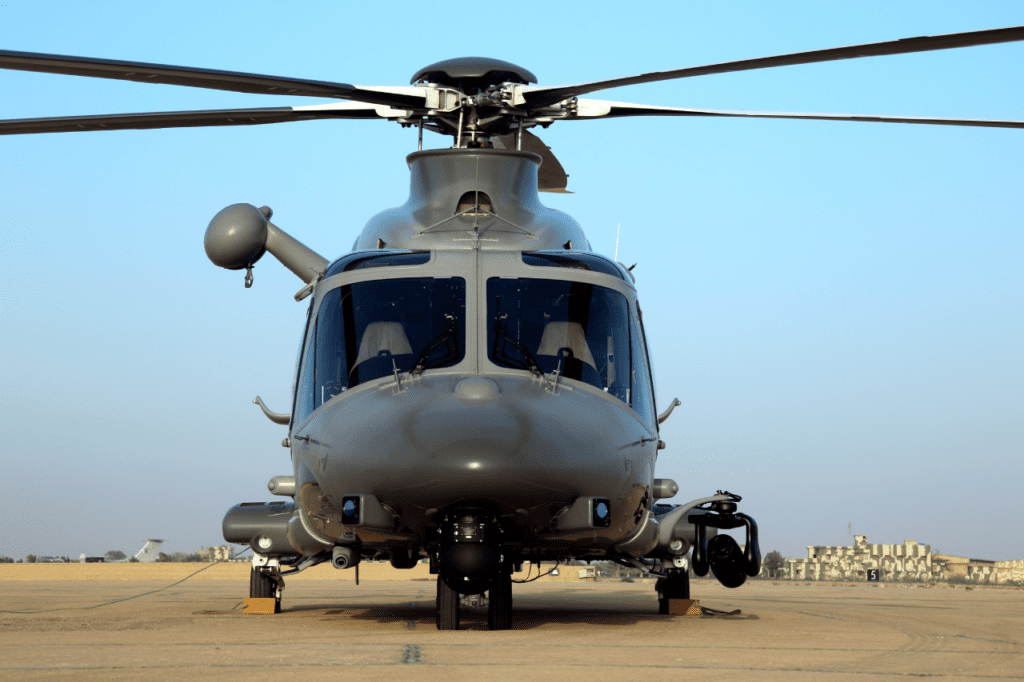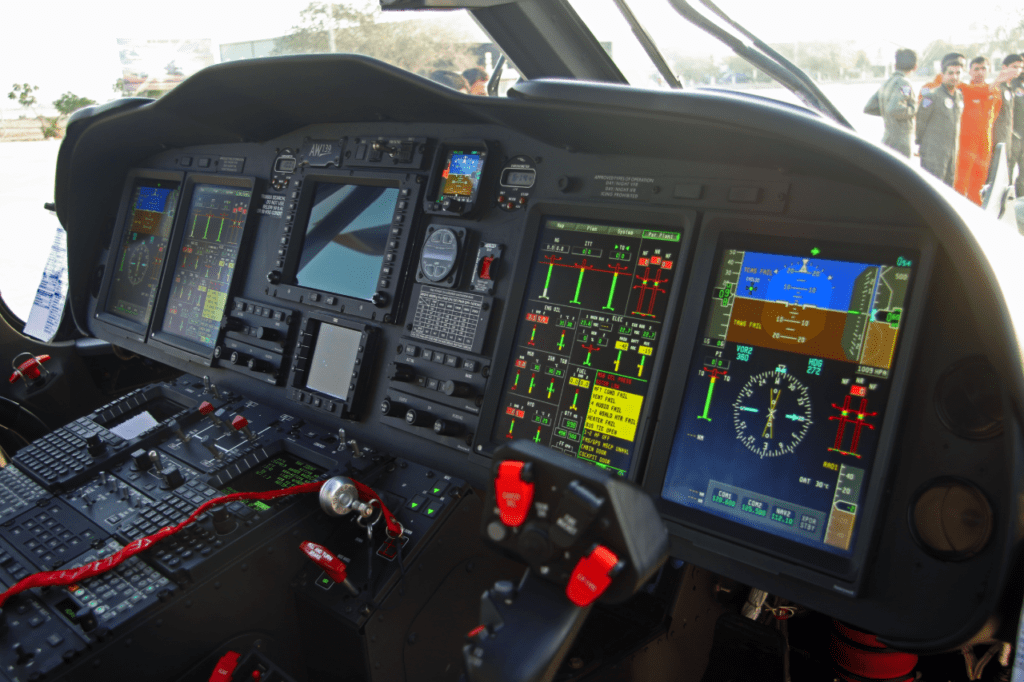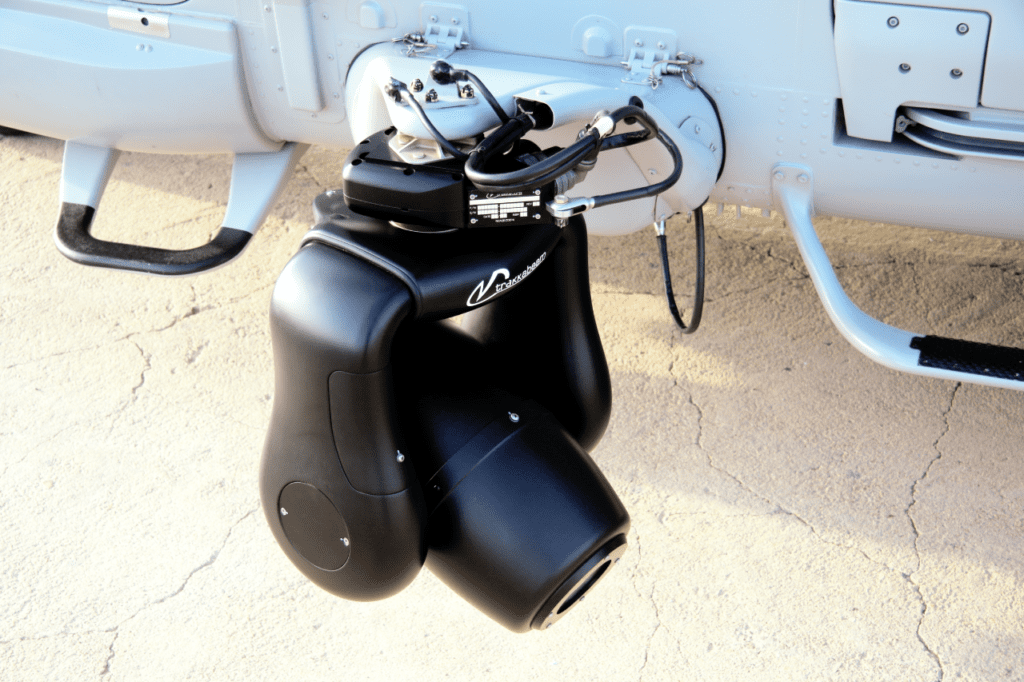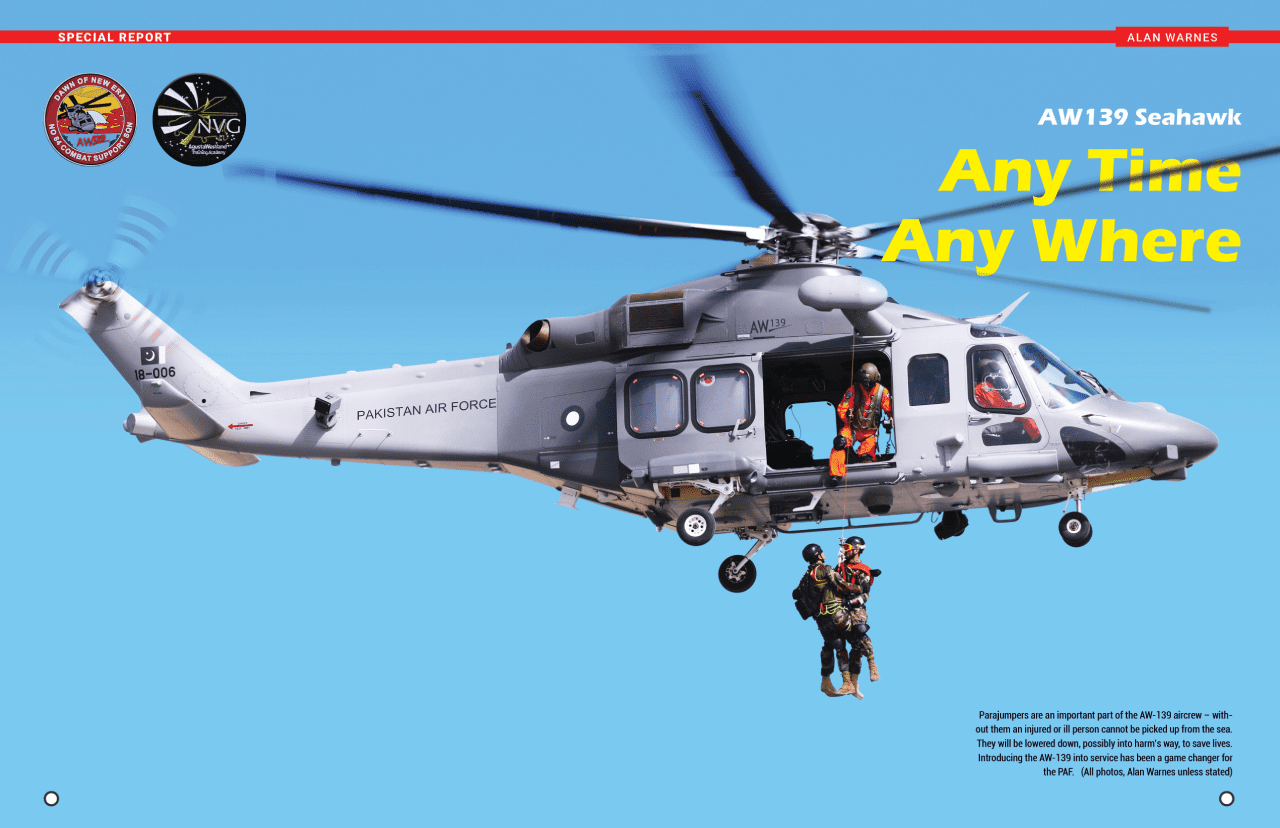A much-needed new capability was ushered into service in late March 2019 at a PAF operational Base in south. The day and night maritime Search and Rescue (SAR) role also signaled the arrival lof a new helicopter – the Leonardo AW-139, which the PAF refers to as the ‘Seahawk’.
Tasked with standing up this much needed capability is No 84 Combat Support Squadron (CSS) which until recently operated the Mi-17 Hip helicopter. As the squadron commander, Wg Cdr Abid Majid told the author, “Having a day and night maritime SAR capability allows us to support all the fighter aircraft around the clock during maritime operations.”
It was a capability the PAF desperately needed. Day search and rescue over land had never been a problem, with the Alouette III and then Mi-17, but SAR at sea, especially at night, highlighted several issues. Mirage and JF-17 Thunder pilots can operate deep into Arabian Sea, knowing they will be rescued. At night it was particularly difficult because of the lack of sophisticated equipment on the Mi-17s to identify the search area and these new helicopters have extended the SAR coverage.
The PAF’s new mount is already being operated by the Italian military and the UK’s Maritime and Coastguard Agency (MCA). Although the AW-139 is much smaller than the Mi-17 it has been adapted and designed to bring casualties back. The helicopter has space for five seats in the VIP/utility role or three seats with two stretchers. The No 84 CSS helicopters are equipped with some of the latest technologies, including a lightweight FLIR Systems’ Ultra Force Forward Looking Infra-Red (FLIR) turret under the nose. A TrakkaCorp TrakkaBeam searchlight system fitted on the lower fuselage of the port side and a Breeze-Eastern hoisted on the starboard side completes the Search and Rescue (SAR) set-up.

Wg Cdr Abid is, not surprisingly, very enthusiastic about the system: “The mission control operator in the rear cabin will use the Ultra Force FLIR for searching land and sea surfaces. At the same time, the system’s tracker beam working in conjunction with the EO/IR system can be used for ISR [Intelligence Surveillance and Reconnaissance] missions.”
The integrated avionics system inside the cockpit was a treat to watch. The 4-axis Enhanced Flight Director with SAR modes allows the helicopter to hover, automatically and safely, so the pilot and his crew can concentrate on saving lives. The squadron commander talked very highly of what this would bring to the search and rescue missions. “It’s a game changer – one of many that the Sea Hawk brings,” he told the author.
With cameras positioned under the fuselage and on the hoist, pilots can follow the activities under the aircraft when the Para Jumpers (PJs) are in action or as the helicopter descends over a stricken vessel or is picking up a downed pilot. “We are also modifying the helicopter’s system so we can data-link information and imagery to the ground,” the 84 CSS squadron commander said.
The AW-139 can carry 2,600Ibs of fuel and burns between 905 to 925lbs per hour, allowing for around three hours of endurance. It is a very popular helicopter – the 1,000th example was handed over to a customer in late September.
Operational Training
A group of PAF pilots initially went to Italy for type rating and later, Leonardo’s instructors came to Pakistan in July 2018 to assist with the training in the local terrain. Four pilots, two crew chiefs and a pair of Para Jumpers (PJs) went through the operational training that is now saving lives. On the local training, Wg Cdr Abid said: “Initially we were exposed to day and night operations over land. Then shifted to maritime ops, first at 5-10 miles from the coast line before progressing to the advanced maritime training that took us to 25-30 miles out into the open sea.” He continued, “In November 2018, we completed the training, which meant we could perform day and night maritime SAR. After the Italian instructors had departed, we consolidated and enhanced our experiences.” As captain and instructor, Wg Cdr Abid along with other 84 CSS members worked up the skills that now means they can offer an around the clock maritime SAR. The unit reached full operational capability in March 2019.

The Para Jumper (PJ) role is a new one for the PAF. After a year training as air force commandos at the Special Services Wing (SSW), they spend nine months on a diving course with the Pakistan Navy, and another four months with the Original Equipment Manufacturer (OEM).
Wg Cdr Abid continues, “We have a Full Flight Simulator (FFS) now being used by the AW-139 Operational Conversion Unit (OCU) to train PAF personnel on night/day maritime SAR ops. We received Night Vision Goggles (NVG) training by the US in 2011 and we flew with Italian instructors – it was the first time we had experienced the NVGs over the sea.”
According to Wg Cdr Abid, one hour on the FFS will equal one hour of helicopter flying – around 50-60 hours of flying training will move across to the FFS.
Summing up the AW-139 and what it brings to his unit, the squadron commander said, “It’s a step-change from what we were previously operating. It is true that it is more complex to employ, but its search and weather radar, as well as the other new modern avionics and equipment are what the PAF needed.”
Simple things that many air forces take for granted, like keying in the co-ordinates of where an aircraft may have gone down, or a stricken vessel is sinking, will aid the recovery to be much quicker – especially at night.

Working up the fleet
Before ordering the AW-139, the PAF checked out the helicopter’s hot-and-high performance during flight tests in Pakistan in mid-2016. The work is believed to have included take-offs and landings on unprepared surfaces at 16,000ft (4,900m) and up to 20,000ft (6,096m).They went well and Pakistan Army has also ordered more of them to add to the five AW-139s already flying with the Pakistan’s Emergency Relief Cell (ERC) at Islamabad Helipad.
All AW-139s, the PAF purchased from Leonardo Helicopters have now been delivered. They were ordered in two batches during 2016 and 2017. In early May 2017, the first pair of AW-139s were flown aboard a PAF IL-78 into a PAF operational base, where the AW-139 maintenance set up is based. Later they were handed over to 88 Combat Support Squadron and Advanced Helicopter Training School – the first unit to stand up. It was followed by 82 CSS and 84 CSS. Finally 87 CSS was the last to receive the new generation helicopter.








